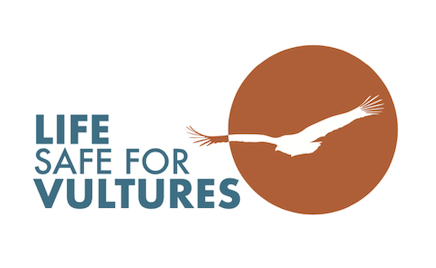After the release of 15 young Griffon Vultures from the Villasalto acclimatization aviary to the Cea Romana forest site on the 9 April, the birds have been exploring new areas. While most of the individuals decided to explore areas closer to their aviary, which is located in the Southen part of the island, three young vultures moved away from the group in different directions. One is exploring the north of the island and might move even further. The other two unfortunately lost their lives, one trying to reach Sicily, the other trying to come back to Sardinia from Sicily after failing to find food and local vulture colonies.

One solitary and brave explorer
Sannicolò is the name of the only Griffon Vulture that left the group venturing north of Sardinia after its release. The young individual started its journey exploring the southeastern area of the island, then it flew to the west coast and followed it heading north to Costa Smeralda after a few days.
From that area, Corsica is just in sight. Thanks to the wind on the Strait of Bonifacio it may take its chances and try to reach it. Scientists are closely monitoring its movements thanks to the satellite transmitters, which provide real-time locations.

A destiny in the name?
Each of the 15 young Griffon Vultures released a month ago in southern Sardinia as part of the repopulation action, bears the name of one of the places where the LIFE Safe for Vultures team members hope to see an established colony in the future.
Most of them, true to their names, have been exploring the southern area of the island and, after short exploration trips, they come back to the familiar area of their old aviary near Monti Sette Fratelli to feed and rest.
Following the example of Sannicolò, another young Griffon Vulture named Sinnai, started its free life in Sardinia exploring the east coast up to Dorgali, and then moved to the west coast near Badde Urbara where it is now.
Ballao, Gerrei, Armungia, Quirra, and Muravera have stayed in the area of the Monti Sette Fratelli and regularly return to the aviary from which they were released. Even Villasalto, after a few visits to Villasimius, doesn’t venture too far. Silius explored Fonni and has since returned there.
Two other individuals, Cea Romana and Villasimius, have been flying around the southeast of the Island.
The priceless aid of farm feeding stations and satellite transmitters monitoring
The vultures have been seen feeding at local farm feeding stations not far from their release site, proving once again the importance of these tools in supporting vultures populations. On one occasion, while supplying food to the centralized feeding station near the acclimatization aviary, the Forestas project staff spotted ten of the released birds soaring together over the feeding station set up within a livestock farm.
Feeding stations play a key role in helping these birds thrive in new areas. Thanks to the collaboration of local farmers, they provide a safe and constant food source for vultures, encouraging them to stay closer to the areas where we hope to see the new colony.
GPS transmitters, on the other hand, help scientists and project partners closely monitor the movements of the animals. It makes it easier to reach those individuals that show abnormal behaviours, often linked to health issues, and take care of them before it is too late. At the same time, monitoring birds’ movements collects many important information on their behaviour and their preferred areas, helping the team in their conservation efforts. Seeing these newly released Griffon Vultures coming back to the area of their old aviary is a very positive sign for the restocking programme and it gives us hope for the establishment of a new colony in the south of Sardinia.
After a month from the first release, another group of 21 Griffon Vultures reached the Villasalto aviary from Spain and started its acclimatisation process with the long term goal of seeing healthy Griffon Vultures in the skies of southern Sardinia.
It seems the vultures are getting familiar with the release area. We hope it will become their new ‘home,’ leading to the establishment of a new colony where the species has been missing for 60 years.
About the LIFE Safe for Vultures project

LIFE Safe for Vultures is a project co-financed by the EU’s LIFE Programme, acting as the first step to the restoration of the vulture guild in Sardinia. The University of Sassari leads the project in collaboration with Agenzia Regionale Forestas, Sardegna Corpo Forestale, E-Distribuzione and the Vulture Conservation Foundation. LIFE Safe for Vultures builds on the work of the successful LIFE Under Griffon Wings, with the ultimate objective for Griffon Vultures to regain their historic ranges and distribution areas from the central-eastern part of Sardinia to the south and at the same time promote the long-term survival of the species on the island. The project team is working to expand the network of farm feeding stations, create several anti-poison dog units to tackle wildlife poisoning, establish an additional feeding station in the south of the island, restock the population by importing 40 additional Griffon Vultures and reduce the threat of collision and electrocution with energy infrastructures.




